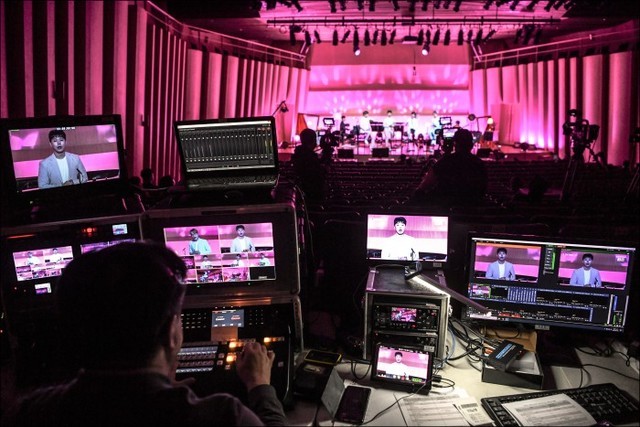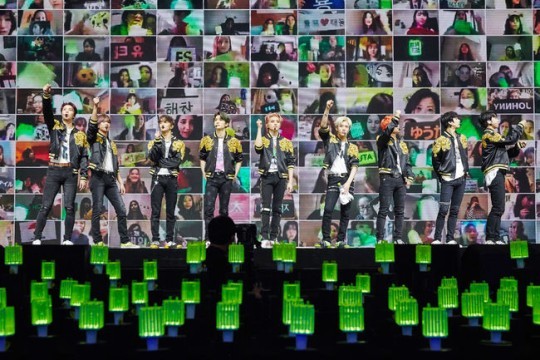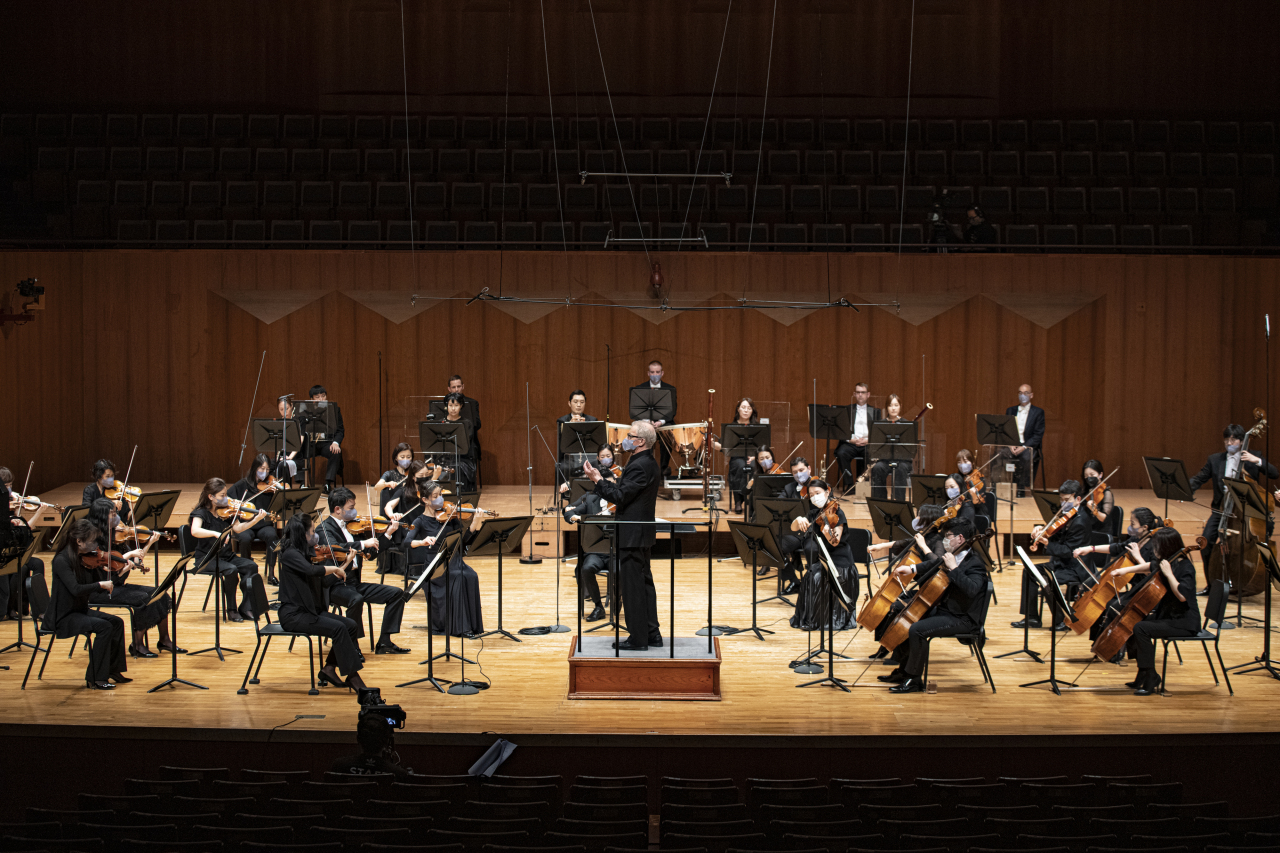Though no one is sure when the current coronavirus crisis will end, things will never be the same again for the performing arts scene, which has come to a near-complete halt for the past few months.
The global performing arts scene has suffered a major blow, as virus containment measures severely restrict gatherings in enclosed spaces. Even the most prestigious performing art venues, including Broadway in New York and the West End in London, have had to shut down.
Numbers prove the impact of the COVID-19 pandemic. Korea Performing Arts Box Office figures show the local performing arts scene recorded 11.2 billion won ($9.4 million) in ticket sales in May. Compared to April, when that number stood at 4.7 billion won, it seems to be recovering. But the respective figures for January and February, before the novel coronavirus took its toll, were 38.8 billion won and 21.5 billion won.
The performing arts scene’s difficulties are expected to continue for some time as the government’s social distancing guidance continues, with stricter measures in place in the Seoul metropolitan area. While the future of onstage performances seems uncertain, troupes and institutions are reaching out to audiences at home via new platforms.
Bringing stage to screen 
Sejong Center staff members livestream a performance. (Sejong Center)
Since the outbreak started, theaters have been experimenting with sharing performances online -- uploading recordings of past performances and creating new content fit for the online environment.
Major arts institutions with the budgets to fund large projects -- such as the Seoul Arts Center, the Sejong Center for the Performing Arts and the LG Arts Center -- -- have launched different online screening projects.
The Sejong Center, for example, used funding from the Seoul Metropolitan Government of 500 million won to give individual artists and small acts opportunities to communicate with audiences online.
The LG Arts Center, under the LG Yonam Foundation, joined hands with LG affiliate LG Uplus, South Korea’s No. 3 mobile carrier, to launch a series of performances enhanced with virtual reality technology.
Arts troupes are becoming creative too, searching for new ways to engage in active communication with audiences via online events. The Korea National Contemporary Dance Company, for instance, shared a home-training video series led by its dancers in May.
The new events are mostly free of charge, focused on the objective of sharing art in a time of crisis rather than profit. But this is not a sustainable option for smaller, private arts companies that lack resources.
K-pop concerts on screen 
NCT 127 performs onstage at a concert streamed via Naver. (S.M. Entertainment)
Though arts troupes find it difficult to charge online audiences, K-pop acts, backed by solid fan bases, have launched monetized online concerts.
For K-pop artists, world tours and festival performances make up a large part of their careers, as well as their incomes. With the virus spreading, overseas travel is all but impossible, as countries have closed their borders and festivals around the world have been canceled.
So K-pop acts are turning to online platforms, holding virtual shows to re-create the in-person concert atmosphere on the screen.
For example, major K-pop agency S.M. Entertainment launched the popular Beyond Live streaming concert service, teaming up with Korean tech giant Naver. Naver was already connecting K-pop acts and their fans online through the V app, an online personalized streaming service.
Through the concert service, K-pop acts -- from Super Junior to NCT 127 -- presents performances enhanced by the latest technologies, such as augmented reality, virtual reality, mixed reality and 3D graphics.
Over the past few years, S.M. Entertainment has been experimenting with the concept of “culture technology,” and the concert series is paving the way for a new business model in the pop music scene, centering on paid online concerts.
NCT 127’s online concert on May 17 attracted more than 104,000 fans. With tickets priced from at least 33,000 won, ticket sales are estimated to have been more than 4 billion won.
Stronger local lineups

SPO director Osmo Vanska leads the orchestra during a livestreamed concert Friday at the Seoul Arts Center in southern Seoul. (SPO)
The global travel ban resulted in changes to festival lineups too.
Normally, local festival lineups involve well-known overseas artists. But because overseas acts can participate in local events only after a two-week quarantine, many are refraining from traveling.
While many festivals have been canceled or postponed as a result, some are sticking to their original schedules with lineups that feature more domestic acts.
The Seoul International Improvisation Dance Festival, which took place in April, proceeded with a completely local lineup. According to festival organizers, though foreign artists wanted to come to Korea despite the quarantine measures, it was impossible to invite them due to safety concerns. Instead, the festival opted for a mostly domestic lineup. The few foreign artists who attended were already in Korea for other projects.
Local artists welcomed the invitations, the festival director said. The second part of the festival is to take place later this month.
The Seoul Philharmonic Orchestra, one of the most prestigious orchestras here, faces a similar situation. The orchestra announced in late May that it would feature more local musicians as most foreign artists could not travel to Korea for a while.
The orchestra’s music director Osmo Vanska flew in from the US a few weeks ago and underwent a two-week quarantine so he could lead an in-person concert May 29. However, the concert was canceled due to infection clusters.
But the orchestra made changes to the program and streamed the concert online, performing pieces that required small ensembles to accommodate social distancing requirements. For musicians’ safety, only half as many as usual could take the stage at once.
Except for those playing wind instruments, members of the orchestra wore masks onstage. They were placed at least 1.5 meters apart.
The orchestra plans to hold in-person concerts on Thursday and Friday at the Lotte Concert Hall for the first time since February. Though the Ministry of Culture, Sports and Tourism ordered national theaters and state-funded art companies to shut down until further notice on Friday, the orchestra has not canceled its concerts.
The orchestra will present the Sibelius, Pelleas et Melisande Suite, Op. 46, and Mahler, Symphony No. 4 in G major for soprano and ensemble or chamber orchestra, joined by soprano Im Sun-hae.
By Im Eun-byel (
silverstar@heraldcorp.com)







![[KH Explains] How should Korea adjust its trade defenses against Chinese EVs?](http://res.heraldm.com/phpwas/restmb_idxmake.php?idx=645&simg=/content/image/2024/04/15/20240415050562_0.jpg&u=20240415144419)
